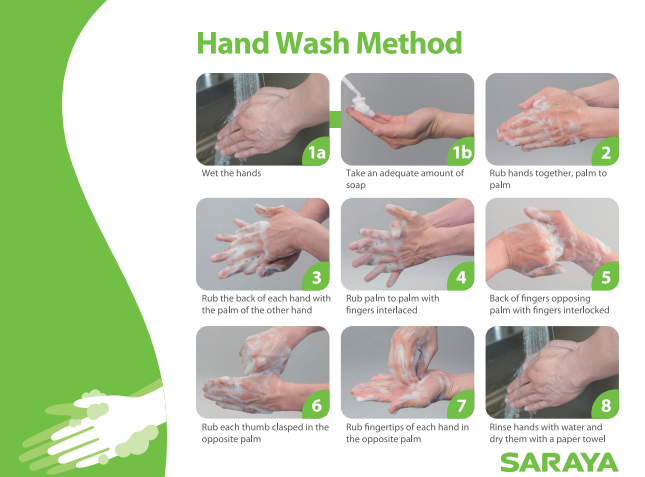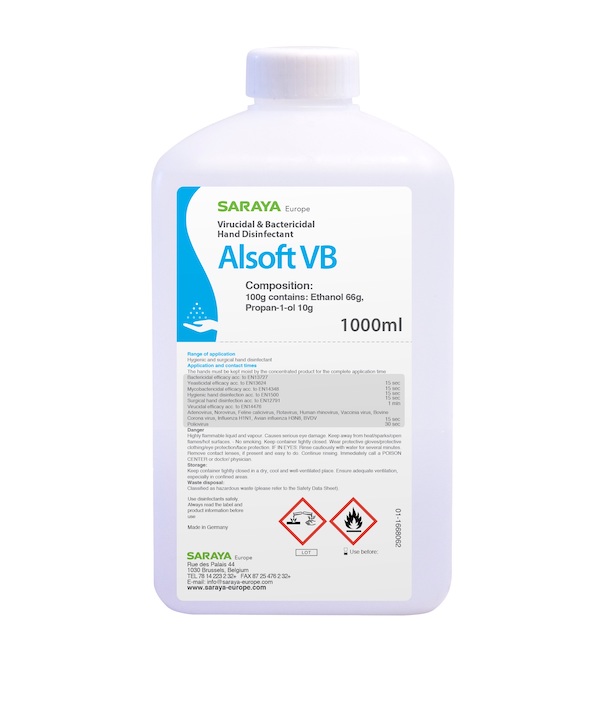- Home
- News
- Consumer Reading Room
- Soap and Water vs Hand Disinfection: When to Use Which
Soap and Water vs Hand Disinfection: When to Use Which

In order to avoid being sick and spreading germs to others, we have already stated the importance of clean hands in other articles on our website, showcasing proper hand hygiene as the key factor in avoiding virus transmission. Over the last years with the proliferation of portable disinfectant bottles, many may wonder if a traditional hand wash with soap is enough or if using hand disinfectants is better in terms of efficiency.
In reality, both methods are more than effective in cleaning your hands but differ in the way they do it. When washing your hands with soap, dirt and germs trapped in the natural oils of your skin are lifted and suspended in water, allowing hand soap to remove germs and bacteria. On the other hand, alcohol-based hand disinfectants kill the bacteria by softening their bacterial membrane, rendering them ineffective due to the action of alcohol.
At the end of the day, both methods can work perfectively fine, so more than a matter if either is more effective than the other, it should be a matter of when should you use each method.
Handwashing

It might sound a bit old fashioned to wash our hands with soap and water, but this method is still the best way to have clean hands. Effective, cheap and easy to use, soap allows us to not only disinfect our hands effectively but also to remove any visible dirt or grime that is stuck in your hands, something harder to do with hand disinfectants, helping us avoid any diseases. If there is no visible dirt, either handwashing or hand disinfecting will do the work, but if you are the type of person that prefers to use hand disinfectants, please be aware that not all exposure to germs and bacteria are inherently bad, so over-sanitizing our hands may actually do more harm than good, something that is called the “hygiene hypothesis”.
For a proper hand wash at the right moment, use the method below at the following key moments:
1. Key Moments
- After using public transport
- Before preparing food
- After touching raw, fresh or frozen fish or meat
- After mopping, sweeping, removing garbage
- After using the telephone
- After using the bathroom
- Before and after eating
- After blowing your nose, coughing, or sneezing
- After touching anything that might result in contamination of hands, like taking care of a wound or a cut, changing diapers or playing with an animal
2. Method

Hand Disinfection

Hand disinfectants, seen as a “tougher” solution against bacteria, are used in hospitals and as a disease control tool for a reason, but we need to be aware of two main points: disinfectants will not actually do their job if your hands are visibly dirty, and that not all hand disinfectants are actually the same. If you are going to buy an alcohol sanitizer to disinfect your hands, we recommend to avoid alcohol-free sanitizers as they tend to have a lower effectivity, and always buy ones with a minimum of 60% alcohol. As an extra precaution, when dealing with outbreaks such as Norovirus, be sure that your hand sanitizer is effective against enveloped viruses, like our Alsoft VB.
1. When to use an alcohol-based hand disinfectant
Basically, you can use hand sanitizers at the same key moments that you would normally wash your hands if you have no access to water. On top of that, alcohol-based is used daily by professionals in the healthcare sector, as they often perform duties in sterile settings and are required to clean their hands constantly. So if you enter a hospital to visit someone you may find hand disinfectant in several places, so do not hesitate to disinfect your hands before entering a patient's room, since it will normally provide stronger disinfection than soap.
2. Method

As a simple conclusion, washing hands with soap and water is the best way to reduce the number of microbes in most situations. Reserve the use of hand sanitizers (remember, alcohol-based sanitizers with a minimum of 60% of alcohol) for those cases where soap and water are not available, and for those cases where a complete eradication of bacteria is a must, like in healthcare environments.
Improving the sanitation, the environment, and health of the world.

© Copyright Saraya.Co.Ltd 2023 All rights reserved.